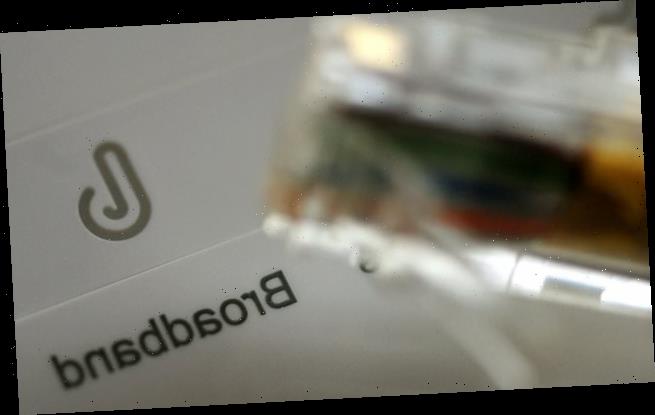UK government could grant internet providers greater access to underground water and sewer networks to support the rollout of gigabit broadband
- Government officials are looking at changing regulations on infrastructure use
- If approved broadband companies could gain access to 600,000 miles of pipes
- This would make it cheaper and quicker to roll out gigabit fibre optic internet
Broadband firms could be given access to more than 600,000 miles of underground sewage and water networks in a bid to speed up the roll out of gigabit internet.
If introduced government plans would force utility firms to open their infrastructure such as pipes and sewers for new superfast internet cables.
The idea is that broadband operators would be able to carry their equipment through ‘passive infrastructure’ owned by other operators and services.
Plans to make it easier to rollout broadband includes opening up ducts, pipes and tunnels owned and operated by electricity, gas, water and sewage firms.
About 80 per cent of the price of rolling out new broadband lines comes from laying new ducts and poles, so using existing infrastructure will reduce the cost.
Government plans could see a regulation change that would force utility firms to open their infrastructure for new superfast internet cables
It isn’t just utility companies, government plans could see existing telecom infrastructure, owned by BT Openreach and others, opened up to competition.
This would include utility ducts, poles, masts, pipes, inspection chambers, manholes, cabinets, and antenna installations made more accessible.
The move could improve telecom companies ability to make use of new and existing infrastructure lining the road and rail networks, the Department for Digital, Culture, Media & Sport (DCMS) said.
It is hoped changes could save time and money in rolling out gigabit-capable broadband, as works such as installing new ducts and poles can make up to 80 per cent of the costs.
Currently full fibre broadband is available to about 12 per cent of the UK – 3.5 million premises, according to Ofcom.
‘We are keen to explore how we can further reduce deployment costs and barriers, including by improving access to the UK’s passive infrastructure such as the networks of ducts, cabinets, poles and masts that deliver our utilities services across the country,’ said Matt Warman, Minister for Digital Infrastructure.
‘Sharing the existing infrastructure of other telecoms and utilities has the potential to increase the speed and lower the cost of improving both fixed and mobile networks dramatically,’ he said.
‘It makes both economic and common sense for firms rolling out gigabit broadband to make use of the infrastructure that already exists across the country.’
He said the move would help firms avoid high costs and disruption that comes from having to dig or build new infrastructure.
‘We’ve seen progress with improved access to Openreach’s ducts and poles, but other telecoms companies have large networks that are not easily accessible.
‘We want them, and utility companies, to do more to open these up and help speed up getting next-generation broadband to people across the UK,’ Warman said.
A review will assess if changes could be made to the Access to Infrastructure (ATI) Regulations 2016, with the Government first launching a call for evidence.
The Conservatives made an election pledge to bring gigabit-capable broadband to every home and business in Britain within five years.
It isn’t just utility companies, government plans could see existing telecom infrastructure, owned by BT Openreach and others, opened up to competitio
Clare MacNamara, chief executive of the Broadband Stakeholder Group – the Government’s advisory forum for telecoms policy, said measures were needed to be in place to support the future broadband rollout.
‘It is important for the Broadband Stakeholder Group that the right measures are in place to support UK fibre and gigabit rollout in order for industry to meet the target of nationwide availability by 2025,’ she said.
‘We therefore welcome Government’s review of the regulations.’
It may not be a perfect solution though, according to ISPReview, running fibre optic cables down water and sewer networks doesn’t always work due to limited space.
This infrastructure also has limited access and ‘a lot of these things are too old or unstable to risk such disruption.’
At this stage the government hasn’t announced any specific changes they plan to introduce, rather they have asked the industry to comment on possible changes.
There is no set date for when this change might begin but the call for evidence on government ideas closes on September 4 2020, so changes won’t be implemented until next year at the earliest.
Source: Read Full Article


